 |
|
World War One
The Global Revolution
by
Lawrence Sondhaus
|
|
 |
|
This is
the 2011 First U.K. Edition in Hardback
“This
is an indispensable new introduction to the global
history of the conflict and its revolutionary
consequences from the war s origins to the making of
peace and across all of its theatres, including the home
fronts and the war at sea. Lawrence Sondhaus sets out a
new framework for understanding key themes such as the
war aims which inspired the belligerents, the
technological developments that made the war so deadly
for those in uniform, and the revolutionary pressures
that led to the collapse of the Romanov, Habsburg and
Ottoman empires. He also highlights the war's
transformative effects on societal norms and attitudes,
gender and labour relations, and international trade and
finance. The accessible narrative is supported by
chronologies, personal accounts, guides to key
controversies and debates, and numerous maps and
photographs.”
Please be aware that this
is a large and very heavy book, making postage expensive
|
 |
|
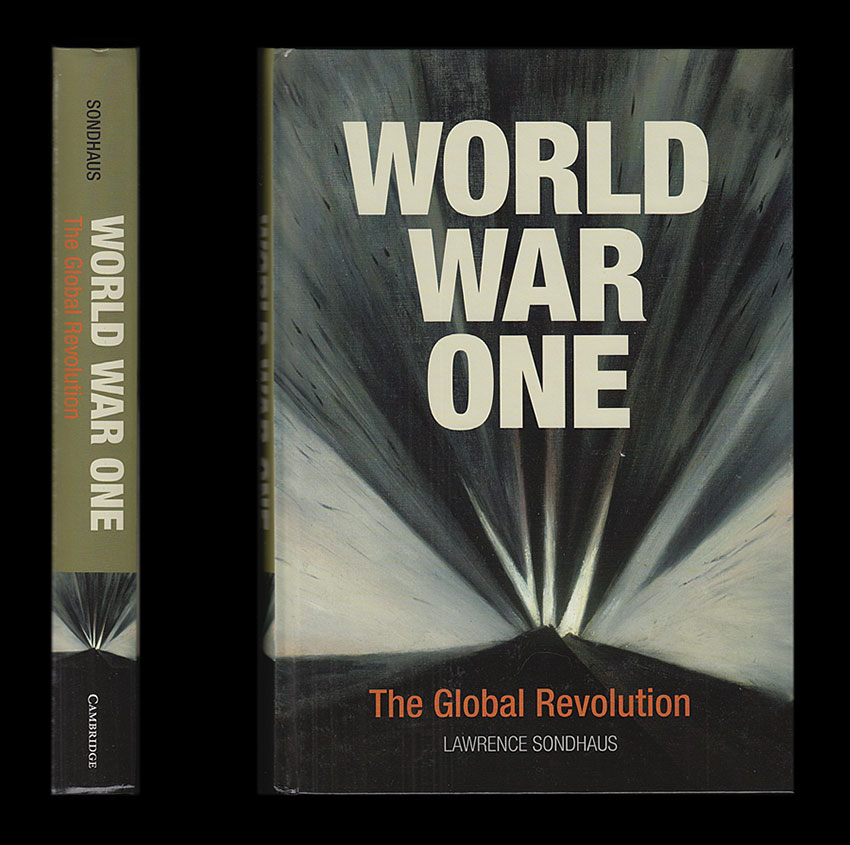
Front cover and spine
Further images of this book are
shown below
|
|
 |
|
 |
 |
|
|
|
Publisher and place of
publication |
|
Dimensions in inches (to
the nearest quarter-inch) |
|
Cambridge: Cambridge University Press |
|
6¾ inches wide x 10 inches tall |
| |
|
|
|
Edition |
|
Length |
|
2011 First English Edition |
|
[xv] + 544 pages |
| |
|
|
|
Condition of covers |
|
Internal condition |
|
Original laminated printed boards. The covers
are rubbed and slightly scuffed, with a small scratch on the front boards
(near the centre). The spine ends are bumped, most noticeably in the centre
of the head of the spine.. |
|
There are no internal markings and the text is
clean throughout. In Fine condition internally. |
| |
|
|
|
Dust-jacket present? |
|
Other
comments |
|
No [this Edition was issued in laminated
boards, with a dust-jacket] |
|
This volume is in internally Fine/unread
condition, though in slightly scuffed boards with bumped spine ends. |
| |
|
|
|
Illustrations,
maps, etc |
|
Contents |
|
Please see below for details |
|
Please see below for details |
| |
|
|
|
Post & shipping
information |
|
Payment options |
|
The packed weight is approximately
1500 grams.
Full shipping/postage information is
provided in a panel
at the end of this listing.
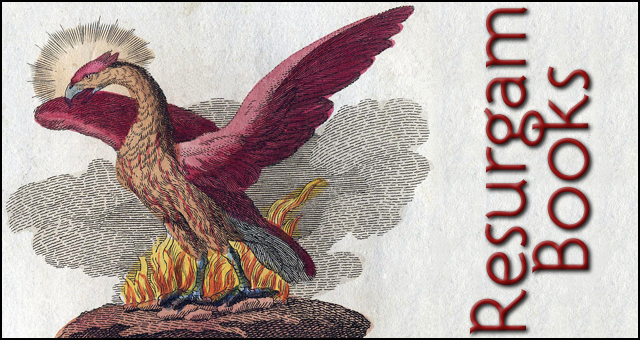 |
|
Payment options
:-
UK buyers: cheque (in
GBP), debit card, credit card (Visa, MasterCard but
not Amex), PayPal
-
International buyers: credit card
(Visa, MasterCard but not Amex), PayPal
Full payment information is provided in a
panel at the end of this listing. |
|
|
 |
|
  |
|
 |
 |
|
World War One : The Global
Revolution
Contents
List of illustrations
List of maps
List of text boxes
List of perspectives
Preface
Acknowledgements
Introduction
1 The world in 1914 and the origins of the war
2 The July Crisis, 1914
3 The European war unfolds, August–December 1914
4 The world war: East Asia, the Pacific, Africa
5 The deepening stalemate: Europe, 1915
6 The home fronts, 1914–16
7 Raising the stakes: Europe, 1916
8 Upheaval and uncertainty: Europe, 1917
9 The war at sea, 1915–18
10 The United States enters the war
11 The home fronts, 1916–18
12 The world war: the Middle East and India
13 Endgame: Europe, 1918
14 The Paris Peace Conference
15 Legacy
Conclusion
Index
Illustrations
Text illustrations
Figure 1.1 William II
Figure 1.2 HMS Dreadnought
Figure 2.1 Franz
Conrad von Hotzendorf
Figure 3.1 Erich von
Falkenhayn
Figure 3.2 Tirailleurs
senegalais at Dunkirk, November 1914
Figure 4.1 German
askari leaving family
Figure 4.2 Paul von
Lettow-Vorbeck
Figure 5.1 Mustafa Kemal
Figure 5.2 German
patrol passes Jews on sidewalk
Figure 6.1 Women's Land Army
Figure 7.1 (a)
Hindenburg
Figure 7.2 Vietnamese
troops in Salonika
Figure 8.1 Tank in mud
at Passchendaele
Figure 8.2 Italian
retreat from Caporetto
Figure 9.1 HMS Argus,
aerial view
Figure 10.1 US conscription lottery, War Secretary
Baker
Figure 11.1 German
food line, n.d.
Figure 12.1 Sharif Ali
of Mecca
Figure 12.2 Lawrence
of Arabia
Figure 13.1 German
eighteen-man tank
Figure 13.2 Petain, Haig, Foch, Pershing
Figure 14.1 Ebert
inspects German battalion
Figure 15.1 Smiling
Faisal
Chapter opening
illustrations
1 Wedding of Archduke Charles, 1911
2 Gavrilo Princip
3 Destruction of Dinant
4 SMS Scharnhorsttakes on supplies
5 German troops enter Warsaw
6 Autumn reserves:
Germany
7 The face of war, Germany 1916
8 Armistice at Brest-Litovsk
9 British Grand Fleet at sea, spring 1916
10 Wilson asks Congress to declare war
11 British women in shell factory
12 Indian lancers entering Haifa, 1918
13 British and French troops in rifle pits
14 Clemenceau, Wilson,
Lloyd George
15 USS George Washington enters New York harbor
Essay
illustrations
1 Australians in trench, Walkers Ridge, Gallipoli
1 View inland from
beach, Anzac Cove
2 Trenches at Salonika, 1917
2 Gurkhas in trench,
Palestine
3 Lenin speaking to
the masses
3 "Democratic peace"
4 U53 surfaced with crew, 1916
4 U-boat deck gun
5 Shellshock treatments
5 Hitler as corporal
Maps
3.1 Western front,
1914
4.1 German East Asian squadron, 1914
4.2 Africa in World War I
5.1 Western front, 1915-17
5.2 Eastern front, 1914-16
5.3 Balkan front, 1914-15
7.1 Romania in World
War I
8.1 Italian front,
1915-18
9.1 Jutland, 1916
12.1 Middle East in World War I
13.1 Western front, 1918: German offensive
13.2 Balkan front, 1916-18
13.3 Eastern front, 1917-18
13.4 Western front, 1918: final Allied offensive
|
|
 |
 |
|
World War One : The Global
Revolution
Publisher’s Information:
Introduction
“Thank God, it is the Great War!” General Viktor Dankl, commander
designate of the Austro-Hungarian First Army, penned these words on
July 31, 1914, the day it became clear that the dispute between
Austria-Hungary and Serbia, stemming from the assassination of
Archduke Francis Ferdinand a month earlier, would not be resolved
peacefully or limited to a Balkan war. Forty-three years had passed
since the last war that matched European powers against each other
and, like many European military officers of his generation, Dankl,
then fifty-nine, feared he would serve his entire career without
experiencing such a conflict. On August 2, when Dankl in another
diary entry referred to the rapidly escalating conflict as “the
World War,” he could not have imagined just how accurate the label
would become: that the action would extend to the Far East, the
South Pacific, and sub-Saharan Africa, that over a million men from
the British and French empires would see action on European
battlefields, that the United States would have an army of over 2
million men in France just four years later, or that European
countries would account for a minority of the states participating
in the postwar peace conference.
World War I as global
revolution
The central thesis of this book is that World War I and the peace
settlement that ended it constituted a global revolution. Like Dankl
and the generals, the statesmen who led Europe to war in the summer
of 1914 did not envisage the worldwide revolutionary consequences of
the conflict whose onset they welcomed (or, at least, did so little
to discourage). Though the emergence of the Bolshevik government in
Russia would serve as a reminder that the world was not yet safe for
democracy, old-fashioned authoritarian governments, Hohenzollern and
Habsburg as well as Romanov, had no place in a postwar Europe that
featured no less than eleven republics on a map redrawn from the
Franco-German border deep into Russia, featuring a net increase of
six independent states and the elimination of one traditional great
power, Dankl’s own Austria-Hungary. Beyond Europe, the
redistribution of former German colonies affected the map of Africa,
East Asia, and the Pacific, while the demise of the Ottoman Empire
brought the wholesale redrawing of boundaries in the Middle East
and, in Palestine, the roots of the modern-day Arab–Israeli
conflict, stemming from Britain’s conflicting wartime promises to
the Zionist movement and Arab nationalists.
Beyond questions of boundaries and territory, the war would also
revolutionize power relationships within European societies. In the
Europe of 1914, most adult males lacked truly meaningful voting
rights; aside from Portugal, which had just overthrown its king,
France had Europe’s only republic, and among the other five European
powers only Britain and Italy had fully functioning parliamentary
governments. Only in Britain, and only recently, had there been a
serious movement calling for the extension of women’s rights to
include the vote. While the war strengthened the position of
organized labor and provided unprecedented employment opportunities
for women, most of the latter proved to be only temporary.
Nevertheless, postwar Europe west of Soviet Russia consisted of
democratic republics and constitutional monarchies, few if any
restrictions on adult male suffrage still existed, and in their
first postwar national elections, Germany and Austria joined Britain
in conceding women the right to vote (with the United States
following shortly thereafter). In postwar Russia the Soviet
government went so far as to grant women the right to abortion on
demand.
The war had an equally dramatic impact on Europe’s position in the
world. White Europeans had enjoyed an unquestioned domination of the
world of 1914, a world in which 40 percent of the human race was of
European stock. Yet in 1919, the thorniest moral issue facing the
peace conference concerned whether to include in the Covenant of the
League of Nations a statement of global racial equality. Though
proposed (somewhat disingenuously) by Japan, the debate reflected
Europe’s loss of stature, both symbolically and demographically, in
the world as a whole. Indeed, as an example of European fallibility,
World War I sowed the seeds of the anti-colonial movement that
erupted after World War II, by which time the population explosion
in the non-Western world further reduced the relative weight of a
Europe that had never recovered from the demographic shock of World
War I, a war in which the overwhelming majority of the millions
killed had been Europeans or of European stock.
Conceptualizing the “first”
world war
By the first days of August 1914 many observers and participants
joined Viktor Dankl in acknowledging the onset of a “Great War” or
“World War,” the likes of which Europe had not seen since the end of
the age of Napoleon a century earlier. The Napoleonic wars, and the
wars for empire in early modern Europe, had featured worldwide
action on the high seas and in the colonies, as well as on European
battlefields, but by the end of August the scope and intensity of
the unfolding conflict, in which most of the belligerents already
had lost more men in a single battle or even a single day than in
entire wars fought during the nineteenth century or earlier, led
most to recognize that they were witnessing something unprecedented.
In September 1914, in remarks quoted in the American press, German
biologist and philosopher Ernst Haeckel made the first recorded
reference to the conflict as the “First World War,” in his
prediction that the emerging struggle “will become the first world
war in the full sense of the word.” The label “First World War” or
“World War I” did not gain currency until after September 1939, when
Time magazine and a host of other publications popularized its use
as a corollary of the term “Second World War” or “World War II,” but
as early as 1920 British officer and peacetime journalist Charles à
Court Repington published his war memoirs under the title The First
World War, 1914–1918. In the interwar years a handful of cynics and
pessimists used “First World War” rather than the more common “Great
War” or “World War,” to reflect their dismay that it had not been,
as Woodrow Wilson had hoped, “the war to end all wars.”
The use of the term, since 1939, reflects our conceptualization of
World War I as the precursor to World War II, a belief universal
enough to accommodate not only polar opposite views of the nature of
the causation (e.g., that World War II occurred because Germany had
not been completely crushed during World War I, or that it occurred
because Germany had been needlessly antagonized at the peace table
afterward), but, more so, the remarkable diversity of lessons
learned and applied by the countries, leaders, and peoples involved.
Whereas in Germany and Russia the Nazi and Soviet regimes proved to
be far more efficient and ruthless than their predecessors of 1914
in mobilizing their countries for war and seeing it through to the
bitter end, regardless of the cost in human lives, the Western
European democracies, the British Dominions, and Italy showed little
desire to repeat the blood sacrifice of World War I, and in various
ways tailored their strategies accordingly, disastrously so for
France and Italy. The United States, whose people were not yet ready
to embrace the mantle of global leadership at the end of World War
I, a generation later rallied to the cause with great fervor after
the shock of Pearl Harbor, while their leaders benefited from the
experience of 1917–18 in mobilizing American resources to fight
World War II. Of the considerable resources of the United States
only its manpower made a difference in World War I, as the fighting
ended before American industrial might could be brought to bear;
thus, both Germany and Japan fatefully underestimated the war-making
capacity and national resolve of the United States in World War II.
World War I and modern total
war
No less than in the public and political realm, World War I produced
radically different responses to the same lessons learned in
military strategy, tactics, and operations. The bloody stalemate of
the trenches on the Western front led Germany to develop the
Blitzkrieg in order to eliminate static positional warfare, while
France built the Maginot Line in an attempt to perfect static
positional warfare. Thanks to the German example, which built upon
the British example of the late summer of 1918, it became the norm
in World War II for offensives by infantry to be supported by
sufficient numbers of tanks and aircraft to avoid bogging down as
they had in World War I, except in cases where the fighting was in
or near a major city, or in the confined space of a Pacific island.
World War II featured more lethal iterations of every weapon and
battlefield tactic that had revolutionized warfare during World War
I, with the notable exception of the use of poison gas.
The magnitude of death and destruction wrought by World War II far
surpassed that of World War I, especially for civilian populations,
yet from August 1914 onward World War I featured acts of brutality
against non-combatants that presaged what would happen on a far
greater scale a quarter of a century later. From the summary
executions of Belgian civilians by German troops and Serbs by
Austro-Hungarians, to the persecution and, ultimately, genocidal
slaughter of the Ottoman Empire’s Armenians, to the aerial bombing
of London and other cities by German Zeppelins, civilian populations
endured atrocities the likes of which Europe and its periphery had
not seen since the Thirty Years’ War (1618–48) marked the end of the
Catholic–Protestant wars of religion. Meanwhile, at sea the
indiscriminate sinking of millions of tons of Allied shipping by
German submarines cost thousands of lives and foreshadowed the
unrestricted submarine warfare campaigns of both sides in World War
II, while the Allied (primarily British) naval blockade of the
Central Powers brought malnutrition to the home fronts of Germany
and Austria and, ultimately, illness and premature death to hundreds
of thousands of their most vulnerable civilians. Remarkably, the
home front populations not only endured these unprecedented
hardships but, in most cases, became firmer in their resolve as the
war dragged on. Indeed, while war weariness ultimately triggered the
revolutionary collapses in Russia in 1917 and Germany and
Austria-Hungary in 1918, for most of World War I their civilians
persevered just as their counterparts in the Western Allied
countries did, rejecting the notion of a compromise peace that would
render meaningless not just their personal privations but, more
important, the deaths of their sons, brothers, fathers, and other
loved ones. Such perseverance served notice to political leaders of
the risk as well as the reward in mobilizing a country for a total
war effort in the era of modern nationalism: a war could not be won
without such support, but once governments received it, war became
an all-or-nothing proposition, for their own people would not accept
compromise as the reward for such sacrifices. The infamous remark
attributed to Joseph Stalin during his great purges of the 1930s,
that one death is a tragedy, a million deaths a statistic, could
just as easily have been applied to the bloodletting of World War I
and, indeed, would have been unthinkable if that bloodletting had
not come first. World War I, in so many ways a global revolution,
above all else redefined what people could accept, endure, or
justify, and thus stands as a milepost in the human experience for
the extent to which it desensitized so much of humanity to the
inhumanity of modern warfare.
|
|
 |
|
  |
 |
|

Please note: to avoid opening the book out, with the
risk of damaging the spine, some of the pages were slightly raised on the
inner edge when being scanned, which has resulted in some blurring to the
text and a
shadow on the inside edge of the final images. Colour reproduction is shown
as accurately as possible but please be aware that some colours
are difficult to scan and may result in a slight variation from
the colour shown below to the actual colour.
In line with eBay guidelines on picture sizes, some of the illustrations may
be shown enlarged for greater detail and clarity.

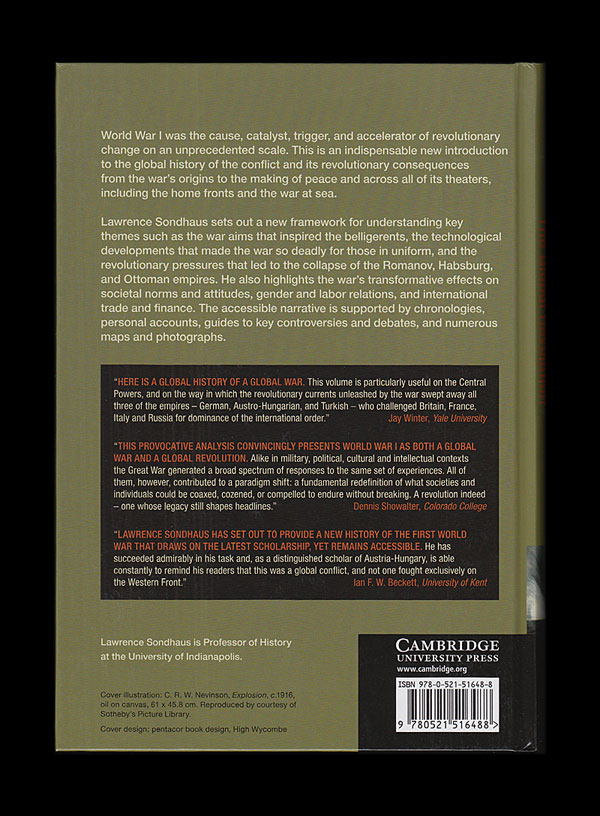

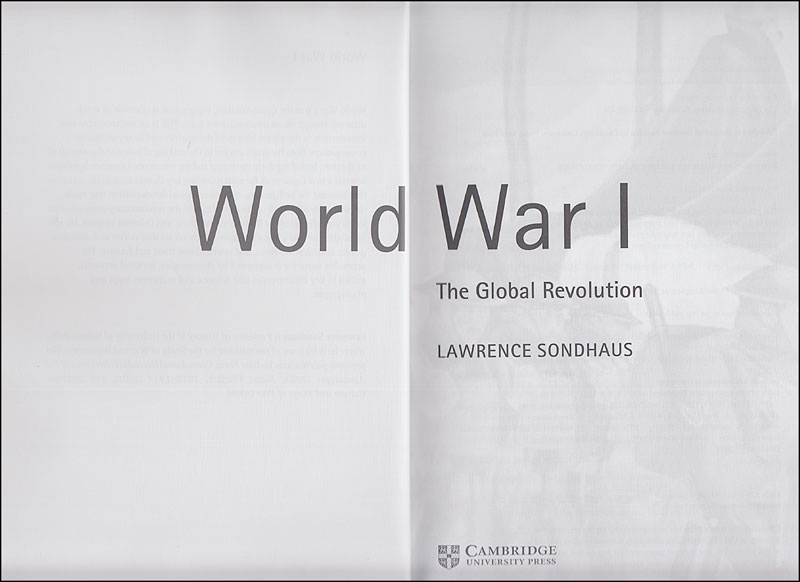
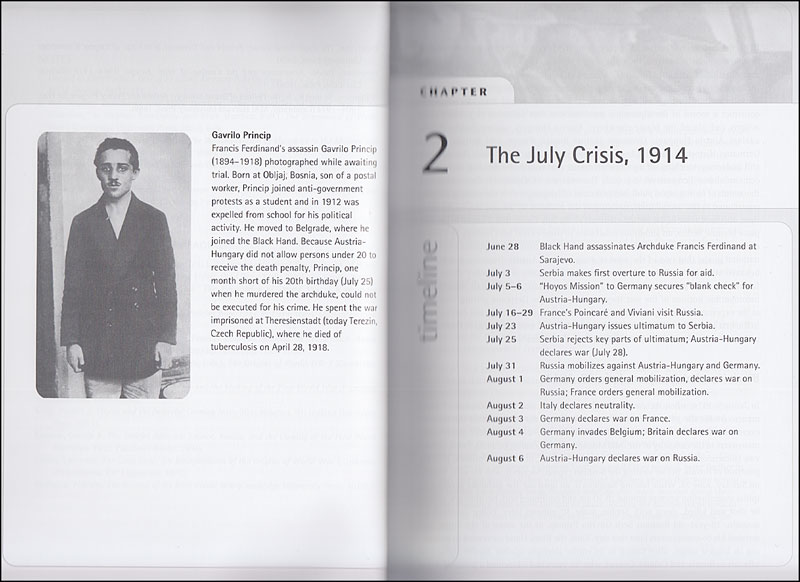
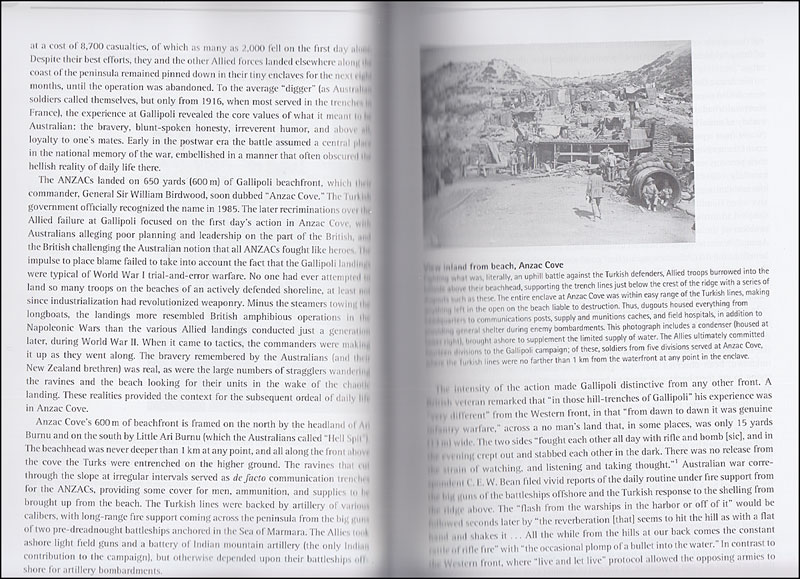
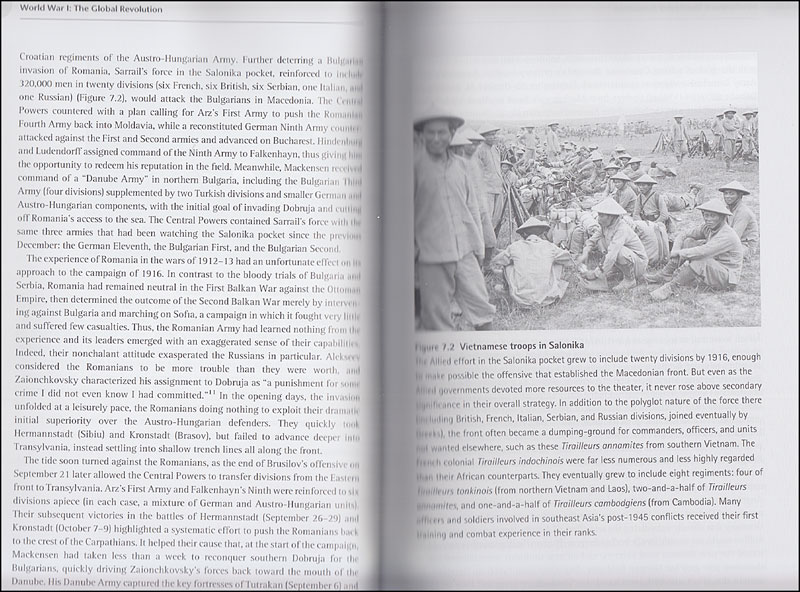
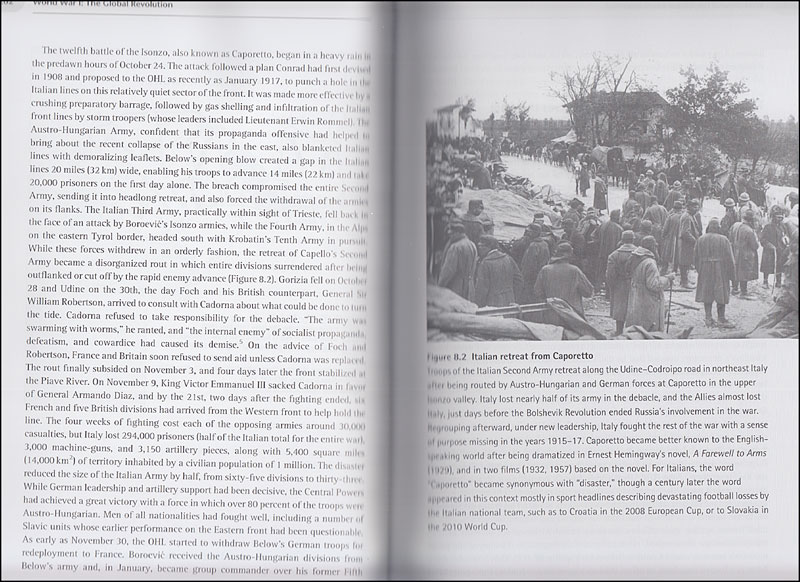
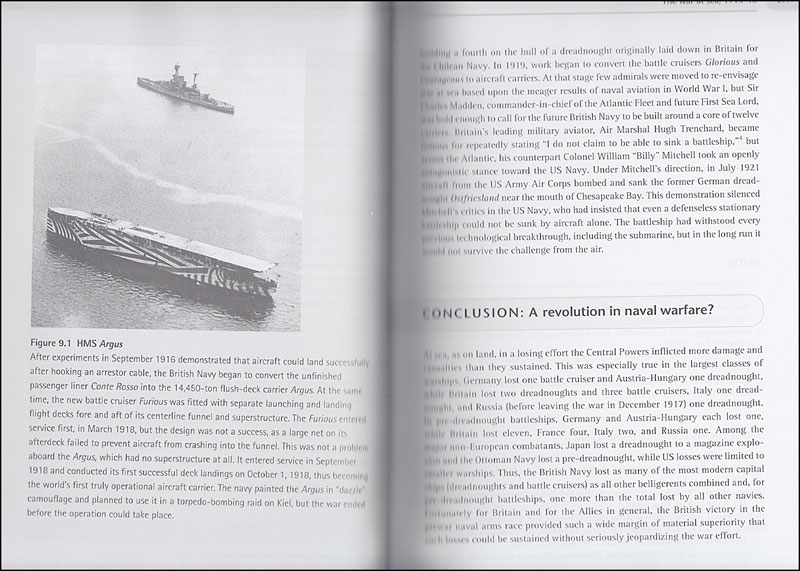
|
|
 |
|
 

|
 |
|
U.K. buyers:
|
To estimate the
“packed
weight” each book is first weighed and then
an additional amount of 150 grams is added to allow for the packaging
material (all
books are securely wrapped and posted in a cardboard book-mailer).
The weight of the book and packaging is then rounded up to the
nearest hundred grams to arrive at the postage figure. I make no charge for packaging materials and
do not seek to profit
from postage and packaging. Postage can be combined for multiple purchases. |
Packed weight of this item : approximately 1500 grams
|
Postage and payment options to U.K. addresses: |
-
Details of the various postage options can be obtained by selecting
the “Postage and payments” option at the head of this
listing (above). -
Payment can be made by: debit card, credit
card (Visa or MasterCard, but not Amex), cheque (payable to
"G Miller", please), or PayPal. -
Please contact me with name,
address and payment details within seven days of the end of the auction;
otherwise I reserve the right to cancel the auction and re-list the item. -
Finally, this should be an enjoyable
experience for both the buyer and seller and I hope you will
find me very easy to deal with. If you have a question or query
about any aspect (postage, payment, delivery options and so on),
please do not hesitate to contact me, using the contact details
provided at the end of this listing.
|
|
 |
 |
|
International
buyers:
|
To estimate the
“packed
weight” each book is first weighed and then
an additional amount of 150 grams is added to allow for the packaging
material (all
books are securely wrapped and posted in a cardboard book-mailer).
The weight of the book and packaging is then rounded up to the
nearest hundred grams to arrive at the shipping figure.
I make no charge for packaging materials and do not
seek to profit
from shipping and handling.
Shipping can
usually be combined for multiple purchases
(to a
maximum
of 5 kilograms in any one parcel with the exception of Canada, where
the limit is 2 kilograms). |
Packed weight of this item : approximately 1500 grams
Please be aware that this
is a large and heavy book, making postage expensive
| International Shipping options: |
Details of the postage options
to various countries (via Air Mail) can be obtained by selecting
the “Postage and payments” option at the head of this listing
(above) and then selecting your country of residence from the drop-down
list. For destinations not shown or other requirements, please contact me before buying.
Due to the
extreme length of time now taken for deliveries, surface mail is no longer
a viable option and I am unable to offer it even in the case of heavy items.
I am afraid that I cannot make any exceptions to this rule.
|
Payment options for international buyers: |
-
Payment can be made by: credit card (Visa
or MasterCard, but not Amex) or PayPal. I can also accept a cheque in GBP [British
Pounds Sterling] but only if drawn on a major British bank. -
Regretfully, due to extremely
high conversion charges, I CANNOT accept foreign currency : all payments
must be made in GBP [British Pounds Sterling]. This can be accomplished easily
using a credit card, which I am able to accept as I have a separate,
well-established business, or PayPal. -
Please contact me with your name and address and payment details within
seven days of the end of the auction; otherwise I reserve the right to
cancel the auction and re-list the item. -
Finally, this should be an enjoyable experience for
both the buyer and seller and I hope you will find me very easy to deal
with. If you have a question or query about any aspect (shipping,
payment, delivery options and so on), please do not hesitate to contact
me, using the contact details provided at the end of this listing.
Prospective international
buyers should ensure that they are able to provide credit card details or
pay by PayPal within 7 days from the end of the auction (or inform me that
they will be sending a cheque in GBP drawn on a major British bank). Thank you.
|
|
 |
 |
|

(please note that the
book shown is for illustrative purposes only and forms no part of this
auction)
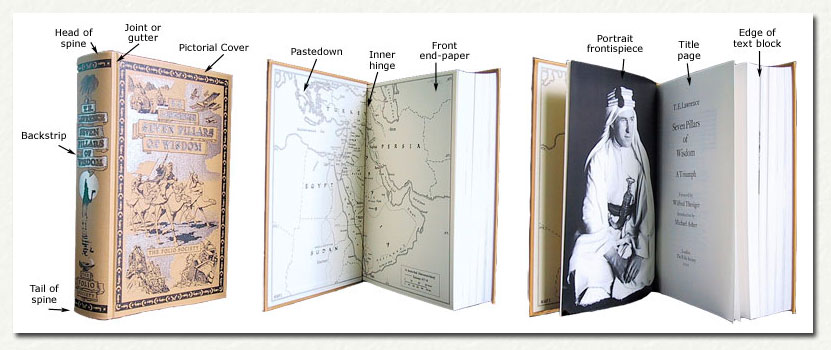
Book dimensions are given in
inches, to the nearest quarter-inch, in the format width x height.
Please
note that, to differentiate them from soft-covers and paperbacks, modern
hardbacks are still invariably described as being ‘cloth’ when they are, in
fact, predominantly bound in paper-covered boards pressed to resemble cloth. |
|
 |
 |
|

Fine Books for Fine Minds |
I value your custom (and my
feedback rating) but I am also a bibliophile : I want books to arrive in the
same condition in which they were dispatched. For this reason, all books are
securely wrapped in tissue and a protective covering and are
then posted in a cardboard container. If any book is
significantly not as
described, I will offer a full refund. Unless the
size of the book precludes this, hardback books with a dust-jacket are
usually provided with a clear film protective cover, while
hardback books without a dust-jacket are usually provided with a rigid clear cover.
The Royal Mail, in my experience, offers an excellent service, but things
can occasionally go wrong.
However, I believe it is my responsibility to guarantee delivery.
If any book is lost or damaged in transit, I will offer a full refund.
Thank you for looking.
|
|
 |
 |
|
Please also
view my other listings for
a range of interesting books
and feel free to contact me if you require any additional information
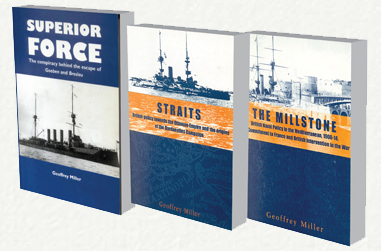

Design and content © Geoffrey Miller |
|
 |
|
|
|